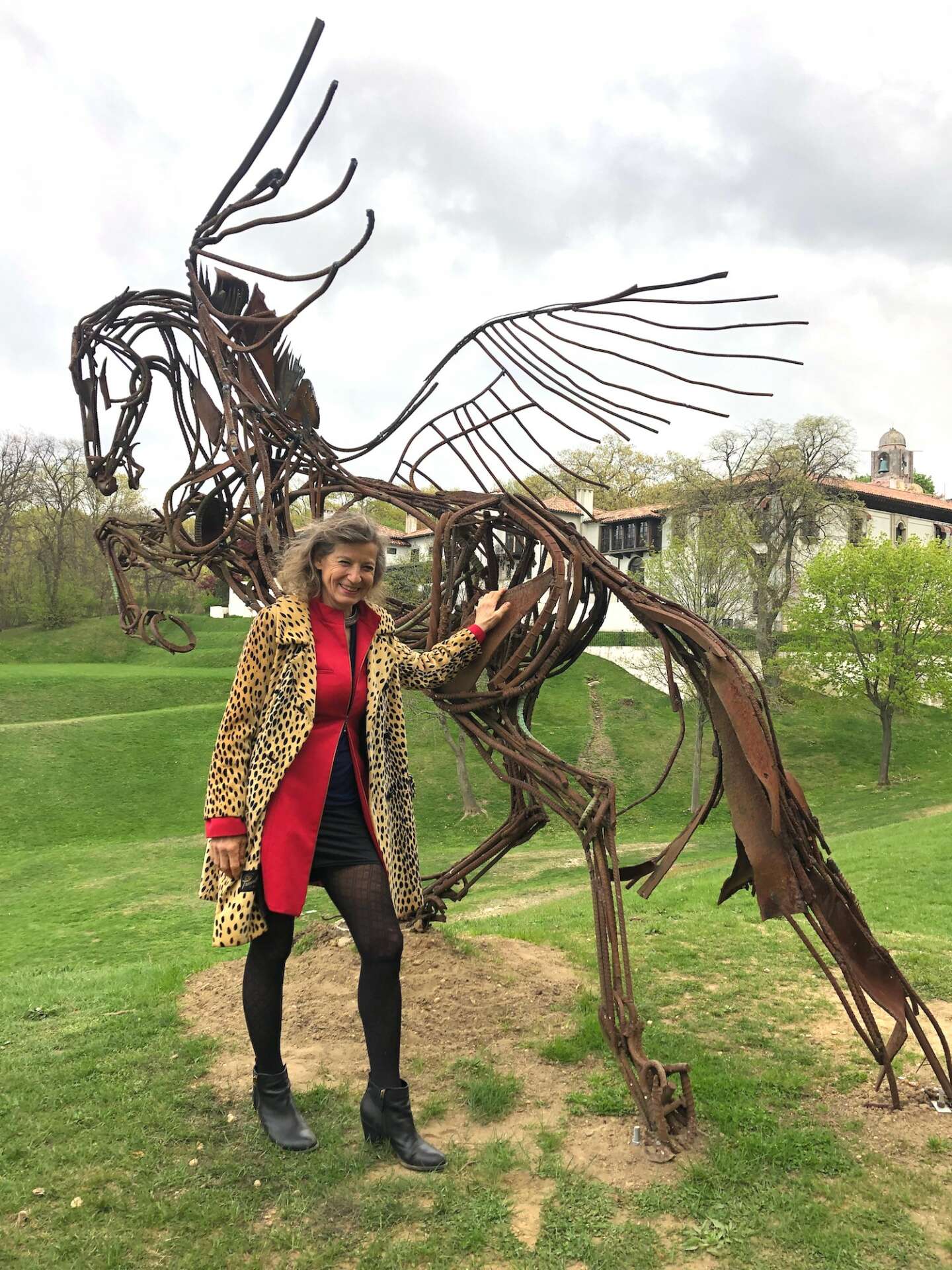We caught up with the brilliant and insightful Wendy Klemperer a few weeks ago and have shared our conversation below.
Wendy, looking forward to hearing all of your stories today. Are you able to earn a full-time living from your creative work? If so, can you walk us through your journey and how you made it happen?
Like most artists, I had many jobs to support myself after art school: teaching art in the public schools, working in some metal fabrication shops, scenic painting for film and commercials, and my mainstay, twelve years of waitressing and bartending. Once in a while someone bought a piece, but it wasn’t until I started showing work outside of New York that I began to sell more steadily. I was in a group show in – of all places- Johnson City, Tennessee and sold some small sculptures. In 1999 I participated in Contemporary Sculpture at Chesterwood in Stockbridge MA, and several people bought work. Having exhibited in NYC for over a decade with little remuneration, it was a wonderful surprise. I began to focus more intensely on outdoor sculpture shows, mostly in venues outside the city. It also made sense for my work, as I like to work on a large scale with images from the animal world. At the same time, after making fragile work out of tree branches that decayed over time, I learned to weld and began working with scrap metal. The work made sense outdoors and could survive time and the elements. People who went to these outdoor shows often had homes or second homes where they could envision my work on their property. Even if they lived in NYC, they often first saw me somewhere in the countryside. Eventually I started showing with June LaCombe SCULPTURE, a dealer near Portland who really knew her clientele in Coastal Maine; my work involving nature and the outdoors was a good fit. We’ve had a rewarding partnership for over 15 years. I show in galleries in Montana, Wyoming, and Florida as well. I’m still based in Brooklyn NY, but spend almost half the year at a summer home in Nelson NH. I like to exhibit in NYC for involvement with friends and for exposure, but my living mostly comes from the farther flung exhibitions.
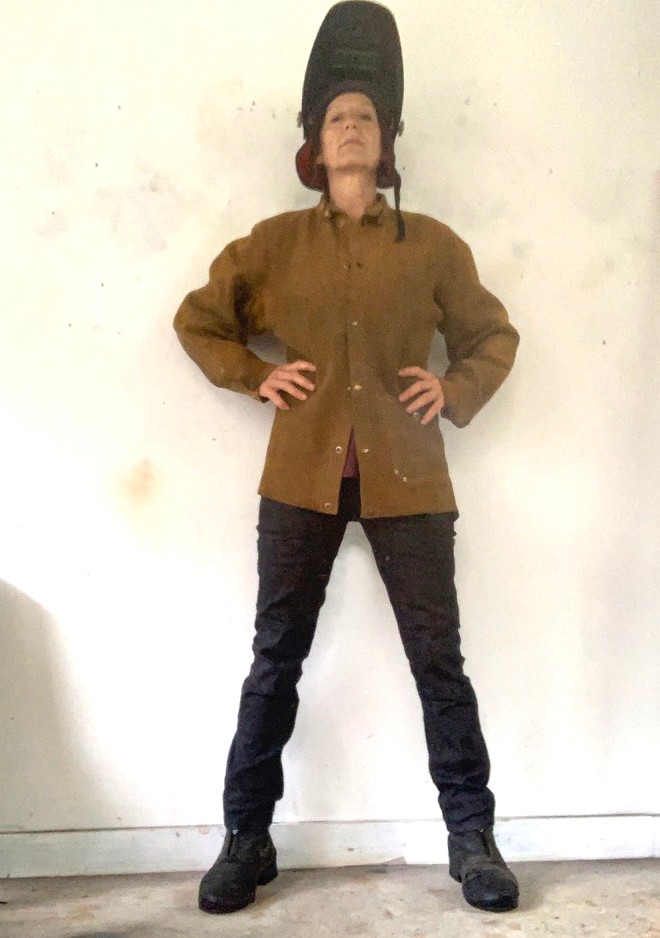

Wendy, love having you share your insights with us. Before we ask you more questions, maybe you can take a moment to introduce yourself to our readers who might have missed our earlier conversations?
I focus on outdoor sculpture in nature. My inspiration comes from a lifelong love of nature and animals, and a deep physical and emotional empathy towards the natural world. Almost all my work is animal imagery made from salvaged steel. The pieces are like three-dimensional drawings made from steel lines sketched in the air. I collect my material from construction sites and scrap yards where the rebar has been bent into nests of scrambled lines from the demolition process, and oil tanks are crushed into evocative folding sheets. I work with these lines and shapes, cutting with a gas torch and welding with an electric arc welder; most of the metal is bent already, but I do adjust curves and create new shapes as well. My process is fast and spontaneous, surmounting gravity as the welds are immediately strong; I don’t need to clamp parts or make an armature or wait for things to set. It’s also easy to undo or make changes as I can cut with a torch to edit. My work provides viewers a way to connect with the environment: walking through a sculpture park, college campus, or nature preserve, when people encounter my work it makes them stop and look. Unlike a gallery or museum, they may see the work by chance or in surprising circumstances. Made from interconnected lines, one can see through the sculptures; the surrounding environment visibly engages as well. Walking around a piece, seeing it from different vantage points, and seeing the relationship between a group of pieces, the dynamics and narratives that can occur, engages people in an unusual way. It makes them think about the landscape that contains the work. People who collect my work look at where they live, and think about how they would like to engage with it more, to reveal the potential of the landscape.
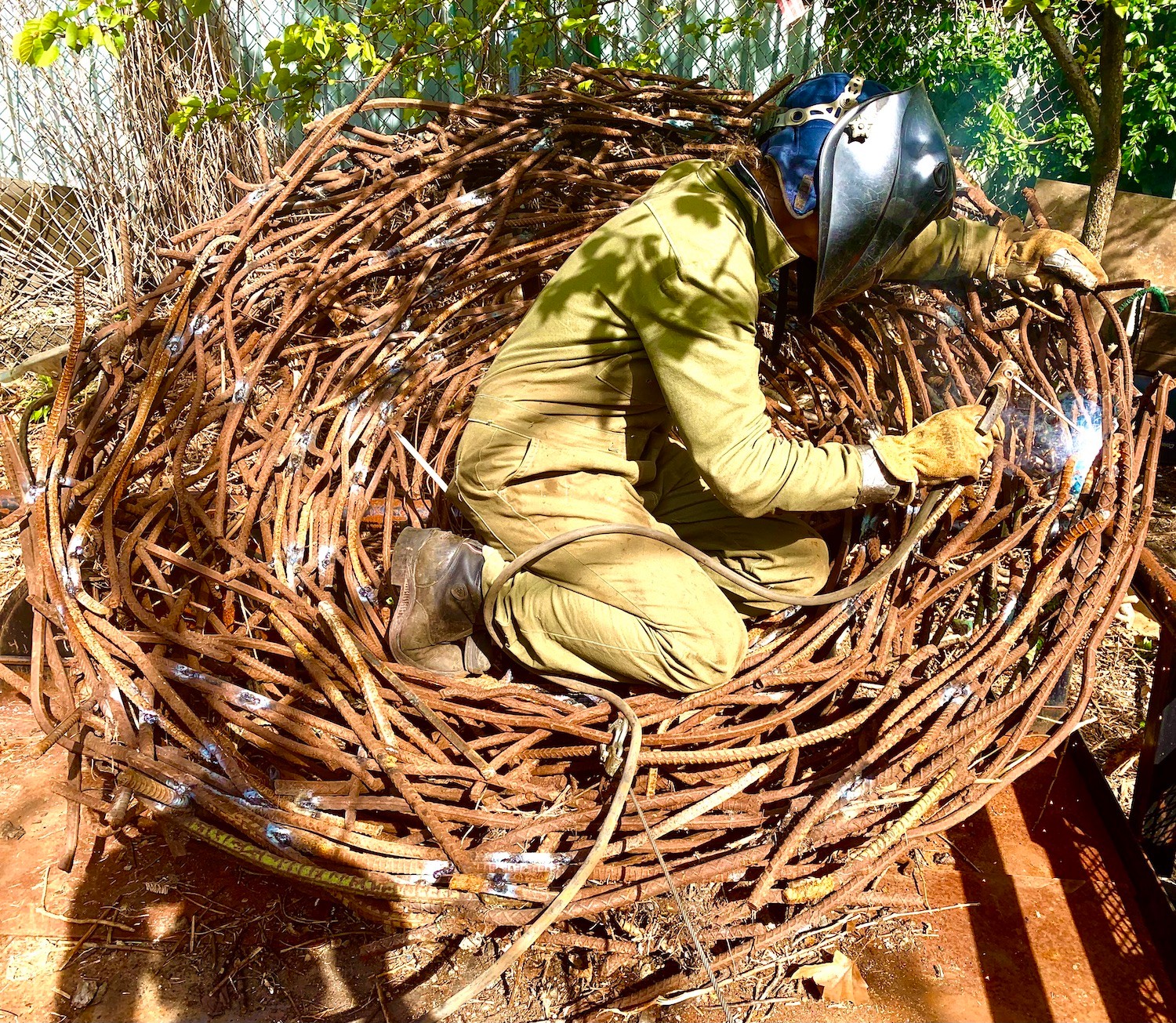
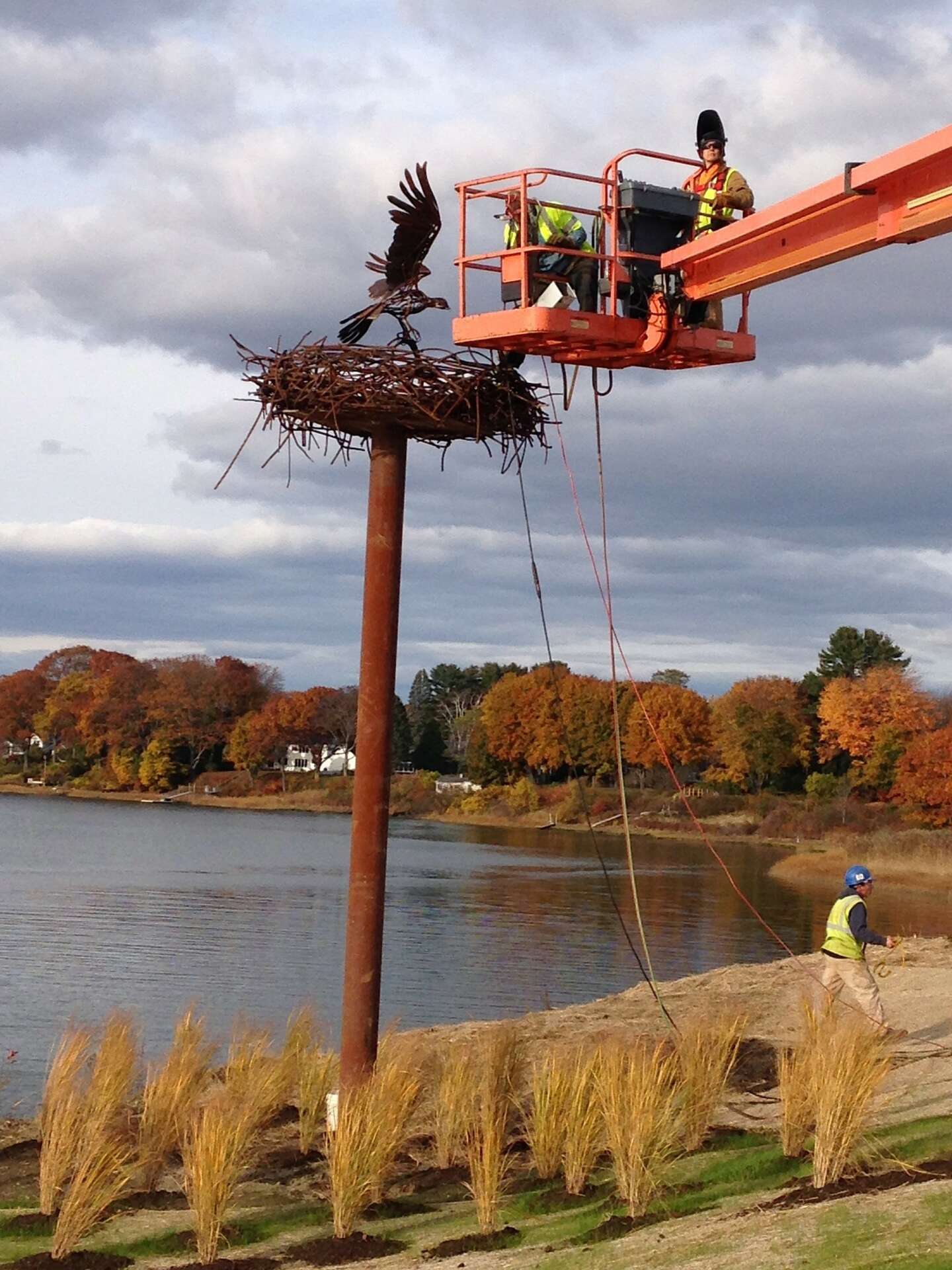

We’d love to hear a story of resilience from your journey.
Can I share a story? I’ve got a lot of stories! Making outdoor sculpture requires a great deal of physical and mental perseverance. Not only do I make the work; I need to collect the materials which involves driving to the scrapyard and construction sites in my pick up truck and loading 1000- 2000 lbs of metal at a time, driving home, sometimes hours, and then unloading. I have to have all my equipment functioning well, which involves maintenance: welder, gas tanks, compressor, plasma cutter, grinders, etc. Then I made a sculpture.
Then I need to transport the sculpture. I need a way to get the large piece into my truck or trailer, which involves a forklift, crane, gantry, or a whole bunch of guys. Then I drive to the site, then we unload. Often installing involves digging footings and pouring concrete and welding to secure the sculpture. Sometimes I’m on a ladder, or up in a cherry picker 20ft high. Doing outdoor sculpture is really a lot of being a construction worker, and an engineer, and a trucker as well. Stories… let’s see. The favorite piece I ever made was an 18 foot tall sculpture of a horse falling on its head like a steeplechaser, Fallen Horse. I built it at Socrates sculpture park in 1998, having received an emerging artist residency grant; wonderfully, they provided space, tools, and technical advice. I knew I needed to scale up for the piece to stand out in the park. It was the most ambitious thing I had ever done. It was a great success and people loved the piece. I felt I had finally achieved a new level and some recognition. After 2 years on exhibit, I needed to move it to another sculpture park. We loaded it on a flatbed truck and drove it to Poughkeepsie Sculpture Park. Raising it with the crane off the flatbed truck, the weld where the hook attached gave way. From high in the air, the sculpture crashed to the ground, shattering in pieces like an airplane wreck. Still new to large scale sculpture, I had unknowingly used a welding rod that was not the best penetrating rod on rusty metal. I spent the next week welding the piece back together with the help of the trucker and his crane. Finally, the piece was reassembled almost to what it had been. I was pleased to have it on exhibit again. But within a couple weeks the Sculpture Park received a complaint from the community. Some people found the image disturbing and didn’t want their kids exposed to this rather tragic depiction of a horse. I had received an unilaterally enthusiastic response in New York City; people loved the work and described how it affected them emotionally. But it was banned in Poughkeepsie! The Sculpture Park asked me to remove the piece.
Fortunately, someone who had lived near Socrates Sculpture Park simultaneously asked to buy it. We installed it with much struggle high on a hill behind his new home in Hudson, NY. A few years later, he underwent bankruptcy and sold the home and the sculpture went with it. The person who now owns the house tolerates the sculpture, but doesn’t seem to care for it much. Covered with ivy and undergrowth, the Fallen Horse disappears into the forest behind his house. Only I know it remains like a ruin underneath the enveloping vegetation.

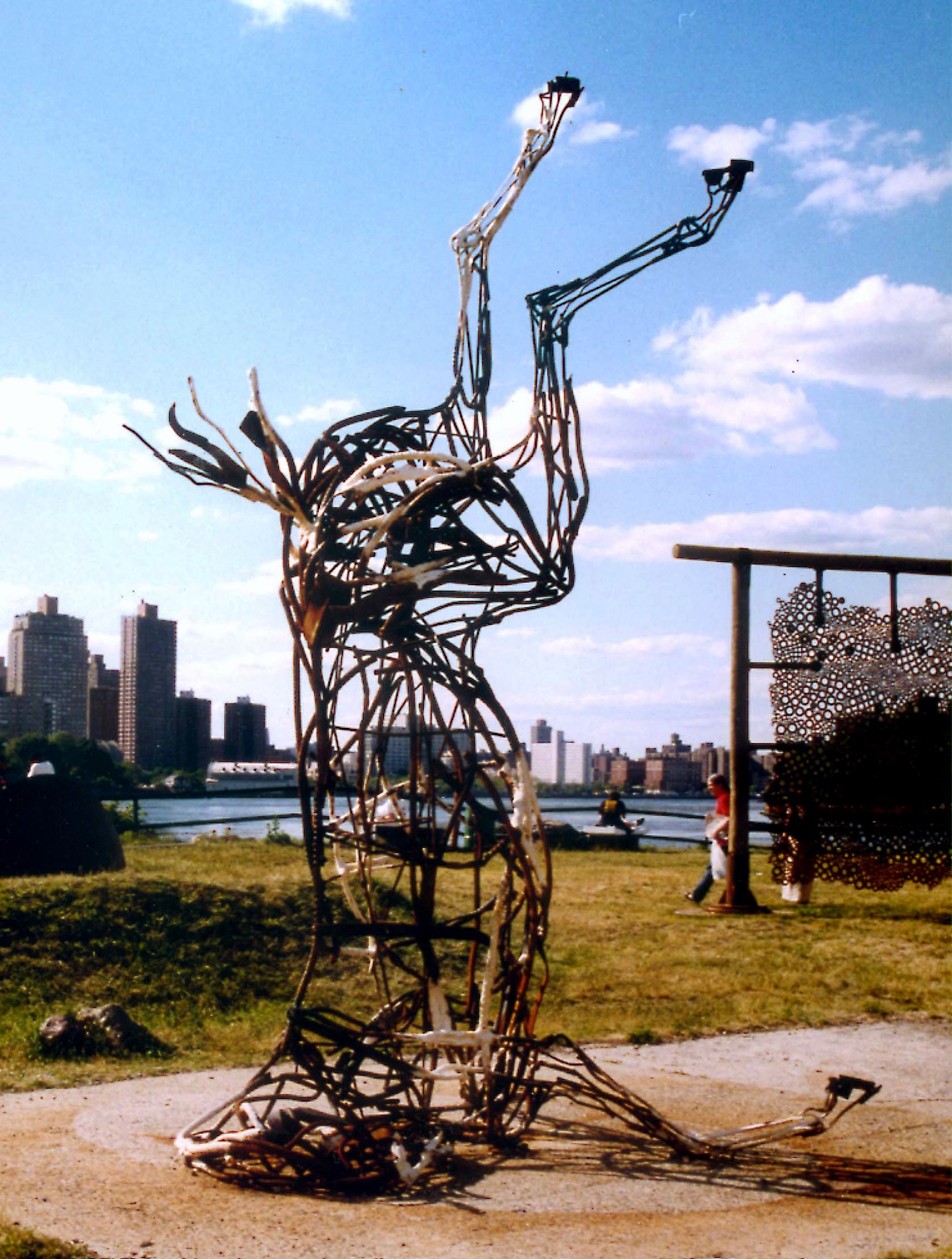
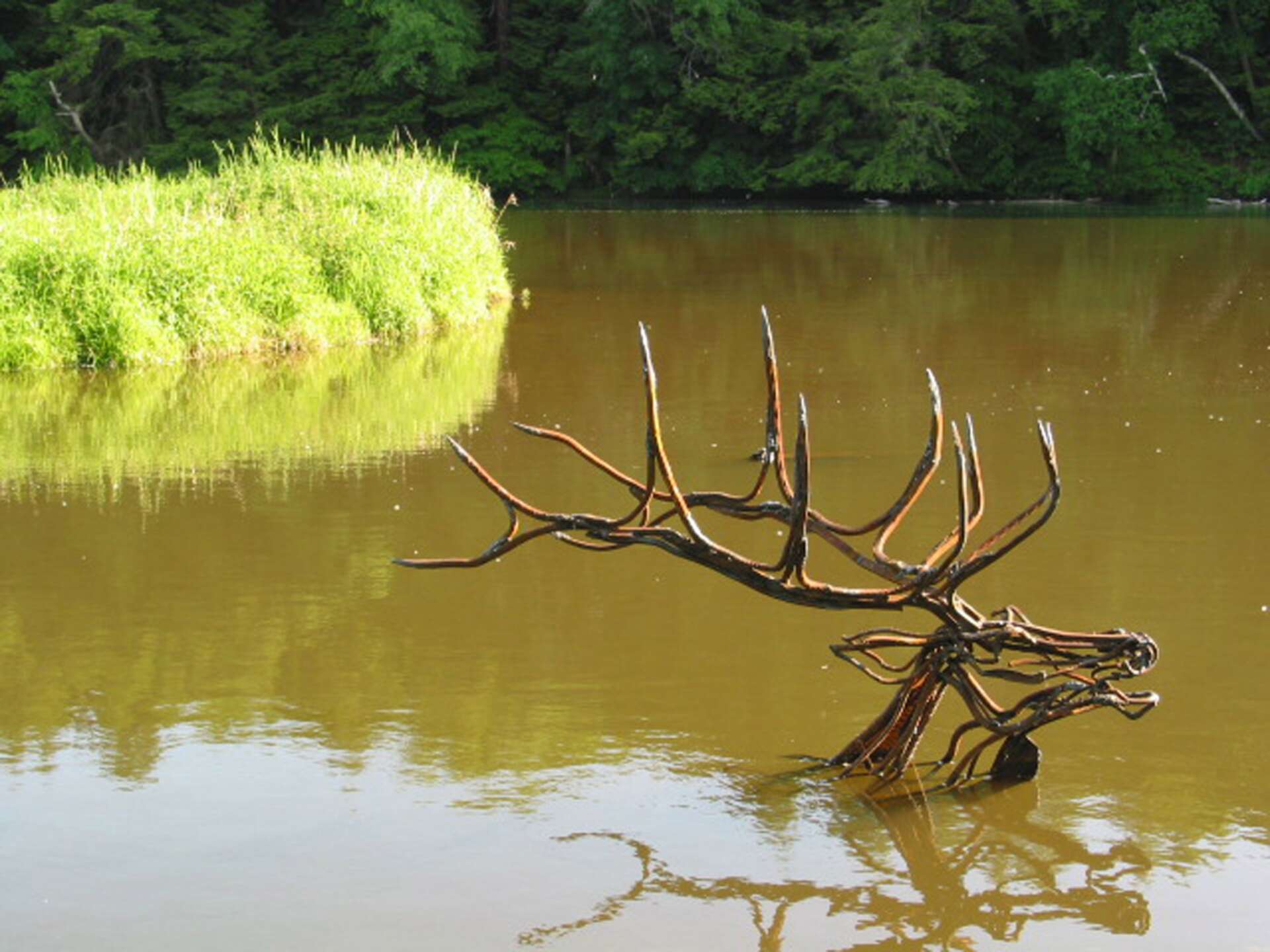
Are there any books, videos or other content that you feel have meaningfully impacted your thinking?
Jackie Battenfield’s book The Artist’s Guide was very helpful to me about 20 years ago. It helped me to put aside my emotional, self-deprecating habits of assessing my work and what appeared to be my lack of progress. It re-framed questions and offered simple daily steps and approaches, allowing one thing to lead to the other. It helped me set some goals and work towards them at a time when I really needed it
Recently I signed up with a group called Netvvrk, https://netvvrk.art/about
which is designed to help artists “get better shows”, network, support each other, share resources and goal-setting. It seems good, but it’s expensive. Ironically, since I’ve signed up I’ve been too busy to do the work that would make it productive….I hope to put in the time this winter.
Contact Info:
- Website: www.wendyklemperer.com
- Instagram: https://www.instagram.com/wendyklemperer/
- Youtube: https://www.youtube.com/results?search_query=wendy+klemperer
- Other: www.codaworx.com www.wescover.com


